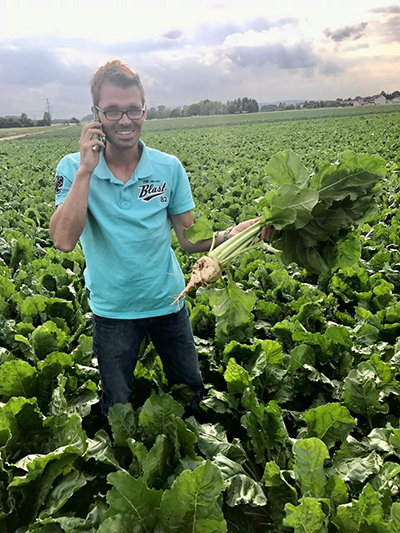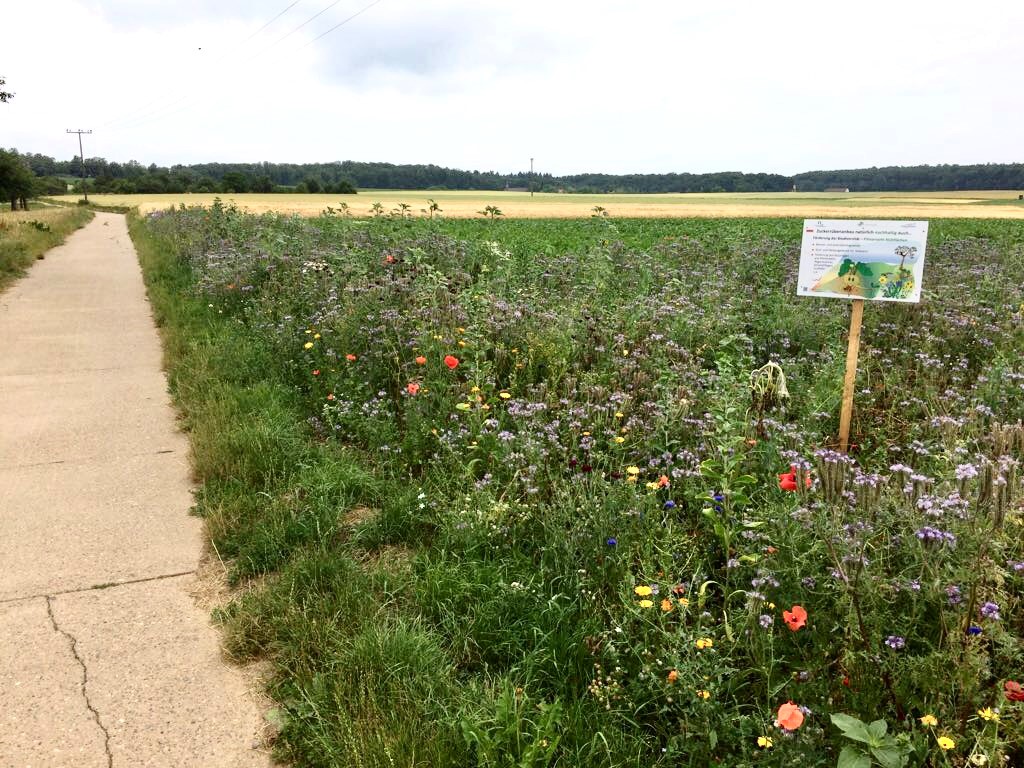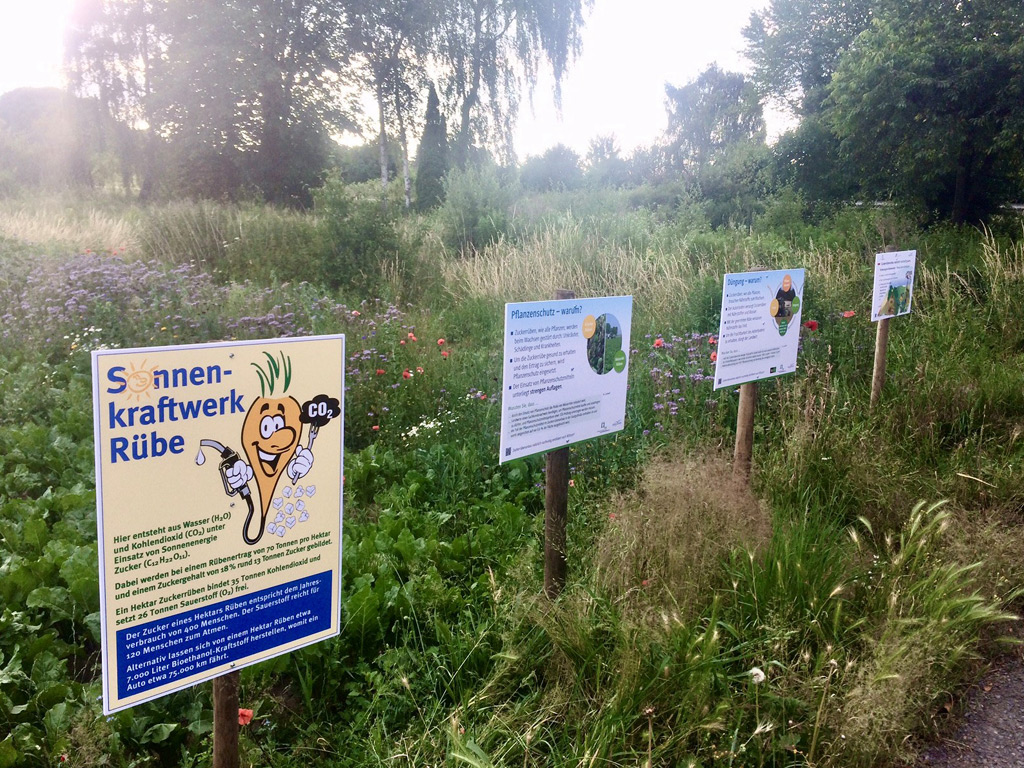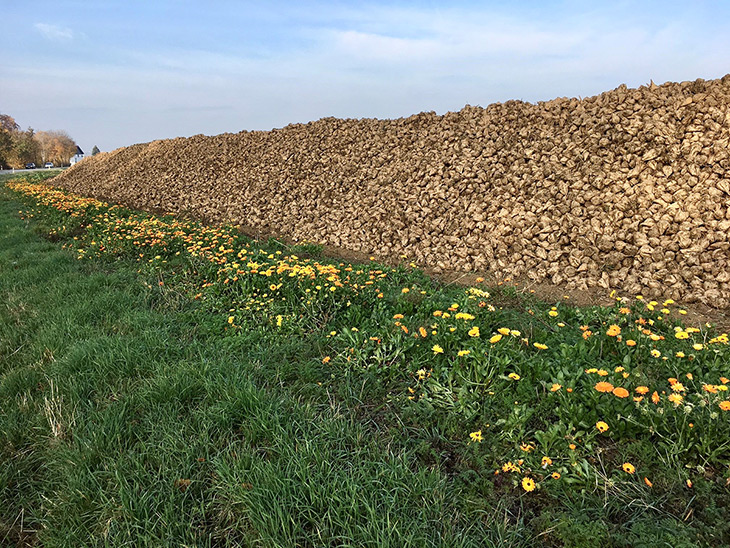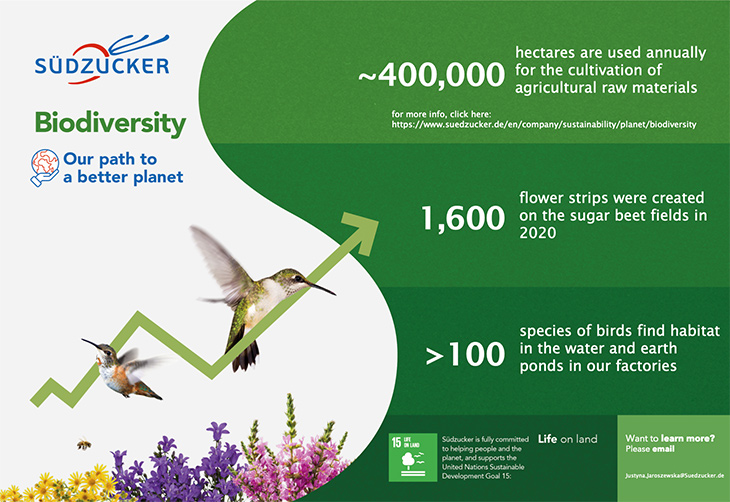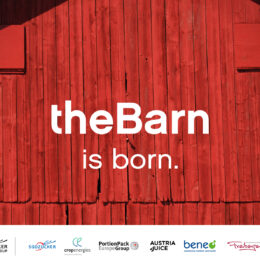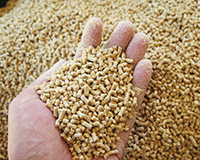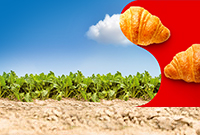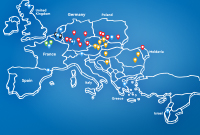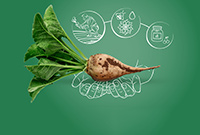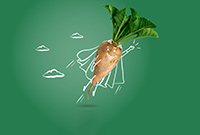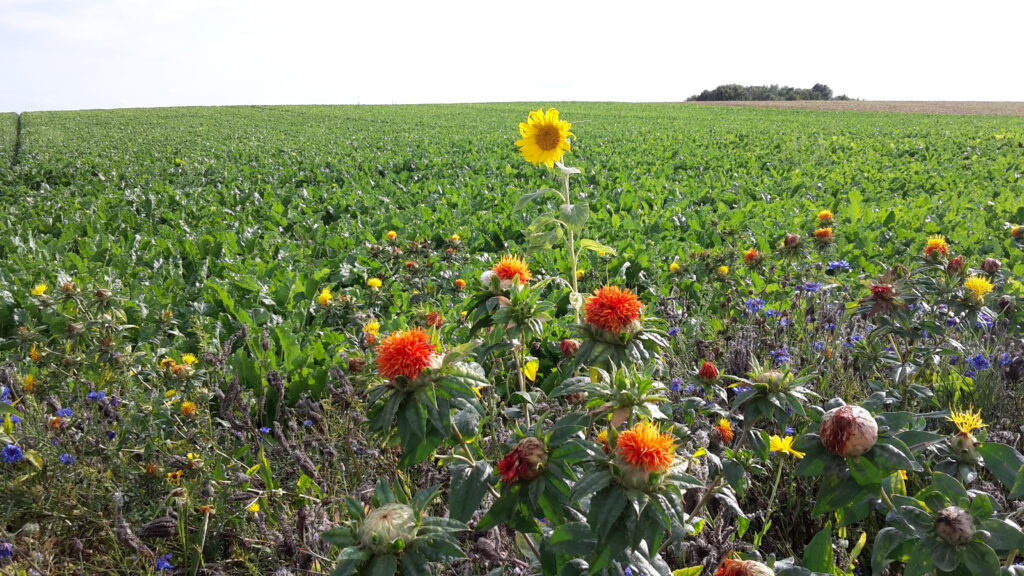
Biodiversity: Interview with a Südzucker sugar beet grower regarding his flower strips

Südzucker: “Mr. Loth, how long have you been a sugar beet grower and how large is your cultivation area?”
Jan-Peter Loth: “In 2010 I took over the agricultural holding of my parents and I have run it along with another agricultural holding ever since. From a total of 190 ha of arable land, 35 to 38 ha are sugar beets, depending on the year. In the past and even today the sugar beet is my “main culture”. It has always been my favorite crop and I can say that my heart beats for the sugar beet! I just enjoy working with the sugar beet, which is also the reason for my long relationship with Südzucker and why I am engaging in the “Südzucker-Rohstoff-Service” (SRS / Südzucker raw material service).”
Südzucker: “When did you think about biodiversity and flower strips for the first time and why?”
Jan-Peter Loth: “It was around the early 2000s when, for the first time, I thought about setting land aside and use areas on or near my fields, not for cultivation but for wild vegetation. The goal was to make the landscape more colorful and to provide wild animals a place to rest. Some years later I began thinking about this topic again, this time with a focus on my rapeseed fields. Many bees come to the fields when rapeseeds are in bloom. But as soon as the rapeseed flowers fade, bees have no flowers left to find nourishment. Therefore, I started to seed different flowers at the edge of my rapeseed fields to provide flowers for bees even later in the year.”
Südzucker: “And when did you start intensively cultivating flower strips on your fields?”
Jan-Peter Loth: “The intense start of growing flower strips was with the Südzucker flower strip initiative. First, the primary goal was to make the landscape more attractive for the people who walk or drive by. As I have many fields that have walking trails next to them, I have seeded the first flower strips along these paths for people to enjoy the flower variety. Many people like the flowers and I receive a lot of positive feedback.
Although it is nice to get into conversations with people about the flower strips, at this point in time I started to think about the benefits for wildlife. I wondered whether it wouldn’t be better for animals if the flower strips were not seeded right beside a pathway with dogs or a street with traffic noise. From then on, while I kept seeding flower strips near the footpaths for the public, I focused more on planting larger flower strips further away from pathways. These flower strips are dedicated for wild animals to find shelter and a place to rest.”
Südzucker: “You just mentioned the Südzucker flower strip initiative. Can you please tell us more about it?”
Jan-Peter Loth: “Südzucker provides sugar beet farmers with a special seed mixture for seeding the flower strips. The seed mixture is special because the flower strips bloom continuously from May until October. I have also tried other seed mixtures, but they were not in bloom for this long. With the seed mixture of Südzucker, once seeded, different plants and flowers grow throughout almost the whole year. The average height of the flower strips is approximately 1.5 m, allowing many different animals to find shelter and a habitat.”
Südzucker: “Which animals can you observe in the flower strips?”
Jan-Peter Loth: “If you stand beside a flower strip you can hear the buzz from bees and other insects and you can see many different butterflies. But what attracts my attention even more are the many rabbits, birds (even partridges!) and sometimes deer that find shelter in more remote flower strips.”
Südzucker: “Where are your flower strips located and how large are they?”
Jan-Peter Loth: “I try to plant flower strips for animals further away from official trails or paths, for example on the fields or at the tails of fields. Some flower strips border on the edge of the forest. These flower strips are around 6 to 10 meters wide. Over the years I have increased the area of flower strips to a total of 3 ha.”
Südzucker: “Could you please summarize your experiences with flower strips and tell us what you have planned for the future?”
Jan-Peter Loth: “I definitely see the positive outcomes of flower strips and how biodiversity increases in and around my fields. Wildlife in particular can find a habitat and shelter in the flower strips, especially after the sugar beets have been harvested. I am trying to continuously optimize how my flower strips grow, so that I can find out the optimal distance between the different flower strips. Moreover, I also plan to plant flowers on field paths that are rarely used to make the landscape more and more colorful.”
Südzucker: “Thank you very much for your time and insights, Mr. Loth.”
Biodiversity at Südzucker
Südzucker has introduced and continuously supports different measures for biodiversity. Growing flower strips in and around sugar beet fields is one of these measures to promote biodiversity. As our sugar beet grower Mr. Loth told us, flower strips provide a habitat for insects, birds and small animals and at the same time they create a more attractive landscape.
This is why Südzucker created 1,600 new flower strips on sugar beet fields in 2020. Our goal for 2021 is to help our farmers plant a minimum of 1,800 new flower strips.
Stay tuned with our newsletter and on LinkedIn to learn more about Südzucker biodiversity measures and achievements.

